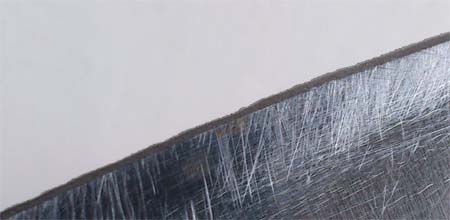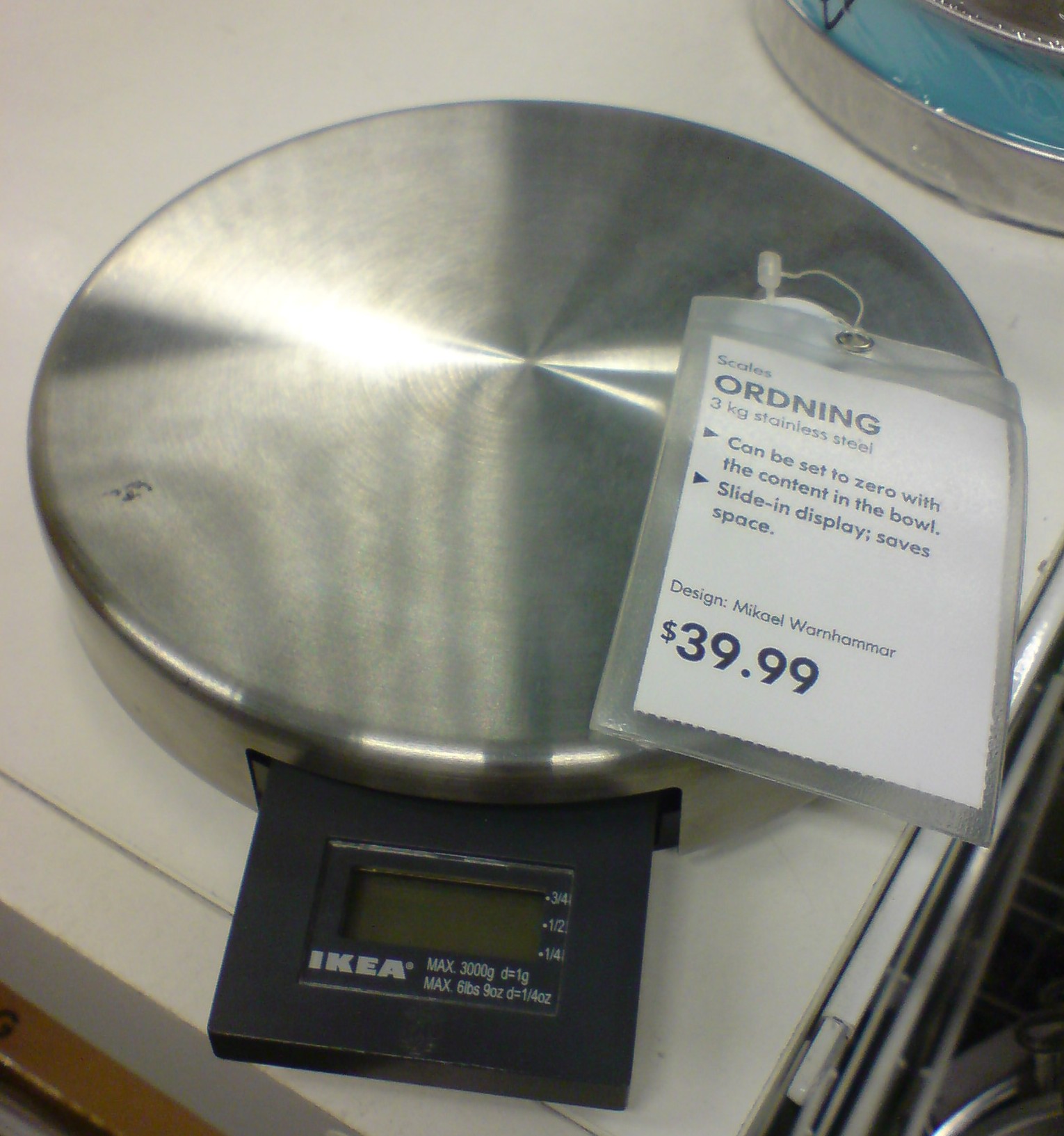One of my greatest fears when someone asks me to cook with them is the prospect of blunt knives in their kitchen. I hate being asked to finely slice an onion or trim a piece of meat with a large dull-edged kitchen knife. Ugh. I believe I’ve once successfully nagged a friend into getting some decently sharp knives.
I grew up with my parents using regularly sharpened carbon steel knives. That’s a metal that rusts at the drop of a hat, but can be worked to a beautifully sharp edge. When I left home I bought some of the (at the time) popular Wiltshire Stay Sharp knives that had a scabbard in which you store the knife. As you removed the knife from the scabbard, a small sharpening groove would do a modest job of maintaining the edge of the knife. Nothing particularly impressive, but I wanted to believe my knives would be sharp.
Once you get to the point where you can own a few serious knives, the problem is how to keep them sharp. Few people really use the honing steel (that rod thing with a handle), and if they do, I think they generally believe it is truly sharpening their knife. The main purpose of a steel is to maintain the sharpness of a blade by evening out minor flaws in the edge that develop with use. A steel cannot rescue a blunt knife, or prevent the eventual blunting of a sharp knife.
After a while, any knife and becomes rough or just dull. Either way, this increases the risks of slipping when cutting and then injuring yourself. A knife needs to be sharp.

Sharpening can be done by hand on a whetstone, but is best left to the avid home-handymen cos it is, in my opinion, a total pain in the arse. There are handheld metal-bladed or ceramic-wheeled sharpeners which can do a moderately decent job if you faithfully sharpen the knives regularly.You could go the route of an electric sharpener, too, though these have had the reputation of stripping the metal off knives without a respectable result. And then there’s professional sharpening services, once provided by roaming “cutlers” and now usually available through cookware stores or culinary bookshops.
You’d think professional sharpening would be a sure bet, wouldn’t you? If you find a good service, stick to it! In my case the first choice I made, ten years ago, was London and American Stores in Melbourne, where my brand new knives were returned to me with radically changed bevels (blade angles) and coarse grinding marks. I like a fairly acute angle on my blades (because I prefer blades that smoothly thin into the cutting edge) and didn’t appreciate it being changed radically. (Note that I have no idea whether that store still uses the same sharpening service.) Understandably, I later used other services that did a much better job.
Professional knife sharpening costs money. I think the current price is typically $7-10 (please correct me if it has gone up) per knife. That quickly adds up if you are serious about maintaining your knives, even once a year!
I’ve been a bad boy about getting my knives sharpened during 2011 and when Kitchenware Direct kindly offered to let me review something, I thought this was the perfect opportunity to try out an oft-disparaged kitchen gadget. I had read some reviews online which were at least moderately enthusiastic about some models of electric knife sharpener, so I took the plunge.
I decided to take my least loved knife, a Füri utility knife, and submit it to the Machine, a Shun Kai Electric Knife Sharpener. Given that the knife had a very rough, hacked up blade, it was a pretty good choice. It took about 12 passes of the blade through the grinding wheels, but the outcome (unfortunately blurry picture below) was a respectably sharp, smooth edge, although with a modified bevel. Over the past few weeks I’ve gradually had the courage to sharpen the rest of my knives, finishing with my Global chef’s knife.

It would seem that using an electric sharpener is in some cases a viable compromise between the blunt-knived kitchen and the $$-draining regular professional sharpening. An important note is that blades that become thicker towards the handle, or have a handle that is the height of the blade, cannot be sharpened for their full length because the end closest to the handle can’t be pulled through the sharpening slot in the machine (see image below). This would cause longterm issues for usability of the knife, with the final 1-2cm becoming useless.

I’ve noticed that the knives don’t hold their edge for as long (that is, they feel less sharp more quickly), but this seems less of an issue if you have the tool to resharpen the knives waiting in your kitchen cupboard. I would guess it does mean that the knives will wear down more quickly, but I’m not sure how much of an issue that is in this short-term-perspective world. On the other hand, if you want your knives to last forty years, like my parents’ ones, then hand- or professional sharpening might be the better choice. Maybe I’ll get back to you in ten years’ time and tell you how my home-electric-sharpened knives are going.
This was a simple no-nonsense sharpener, but there are also fancier ones by some manufacturers, with multiple slots for different steps in the sharpening process (a bit like some of the handheld ceramic wheel models).
Whatever you do, remember that only sharp knives are good knives.



















